Australian stories have become the key battleground for everything from media to politics.
Who gets to tell them? Who funds them? What legislation should we have around them (quotas anyone)? And what economic role do our narratives play in keeping content creators afloat and our national story alive?
But in this economy? We’re at a tipping point.
Remember when you tried to watch the Australian Open tennis circa 2006? Non-stop pop-ups about Desperate Housewives and Grey’s Anatomy.
Even if you, or the consumers you were marketing to, weren’t into tennis or those particular programs, there is likely an international TV drama moment that you remember. Maybe it was 24? Or Lost?
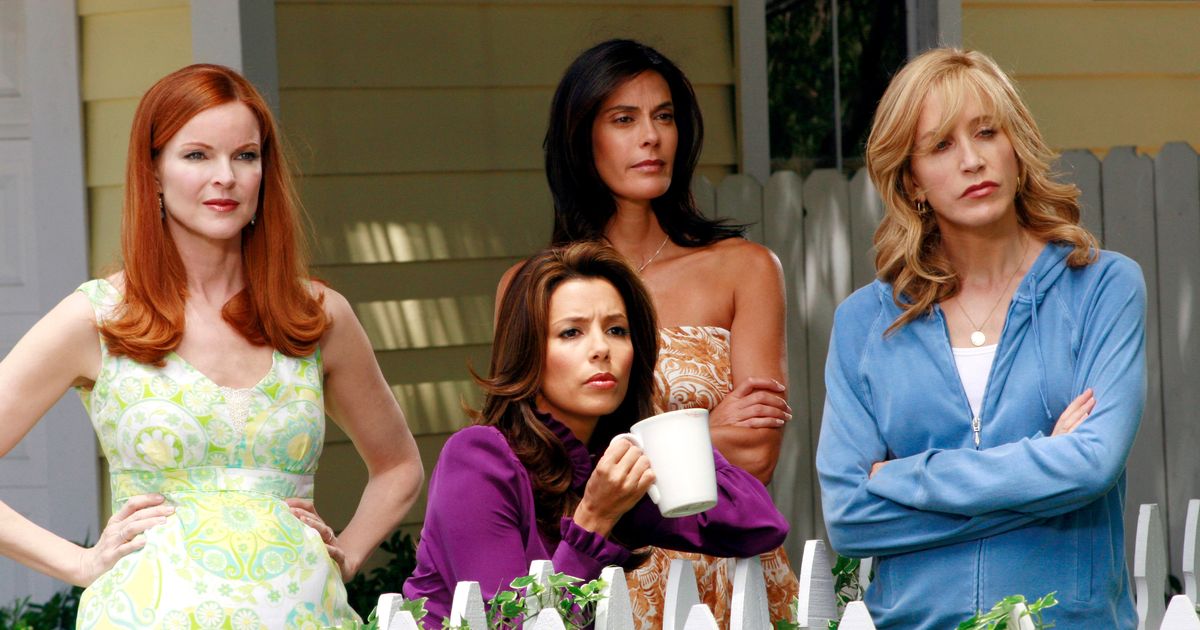
These programs mattered in the conversation, in the content landscape and in everyone’s marketing budgets. So the local TV networks weren’t necessarily making a misstep by overinvesting in these international tentpole programs.
It’s a different world now though.
Those international programs might still have their loyal local audiences, but they’re split between those who dip in and out of them, that small (but, notably, growing) component who will pirate programs and those who follow their favourite legacy characters to whatever streaming service it may be on depending on what licensing agreement exists at that exact moment in time.
So local content has become the point of difference. The game changer. The ‘look at me’.
Nine’s Stan (then a joint venture between Nine and Fairfax before Nine swallowed its JV partner in 2018) was a bit of a game changer.
Properly local programs telling local stories with local producers, actors, writers and teams like 2019’s Bloom, as well as international deals with Paramount that same year, set the service apart.
‘We have the big international programs you want, but we’ll also tell your stories the way you perceive that television used to. We are television, but as you want it.’
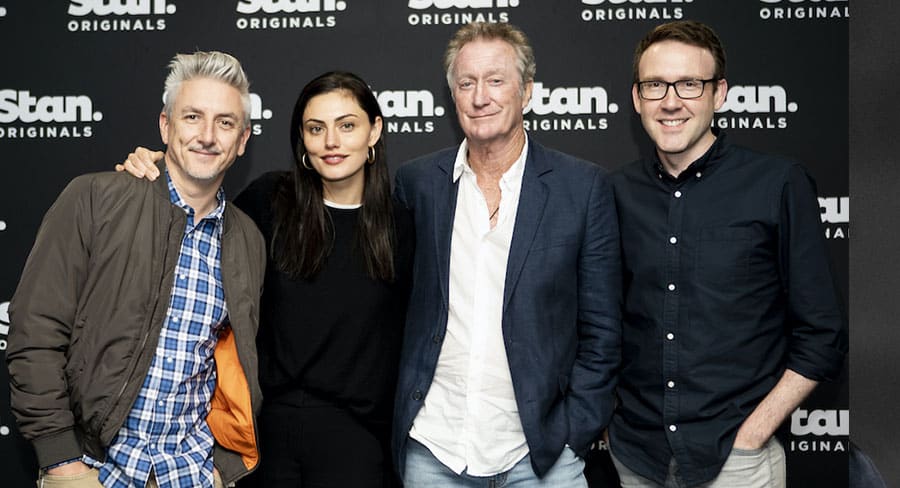
L-R Greg McLean, Phoebe Tonkin, Bryan Brown, Glen Dolman
The game changed again though with the abundant proliferation of streaming services and it felt like everyone’s point of difference was diluted.
Plus, in the background, Australian television had pivoted back to Australian stories. Foxtel and all the free-to-air networks were telling a different story. Your story. Our story.
Massively shifting their position from 15 years ago, they were suddenly falling over themselves to tell advertisers, consumers and themselves how important Australian stories were and are.
And they weren’t wrong.
The top-rating programs on linear television became not Grey’s Anatomy or Desperate Housewives, but MasterChef Australia, and then Married At First Sight, local sporting contests like the AFL and unexpected hits like the Hamish Blake-fronted Lego Masters.
Plus, remember when Patrick died on Offspring? Ooft.
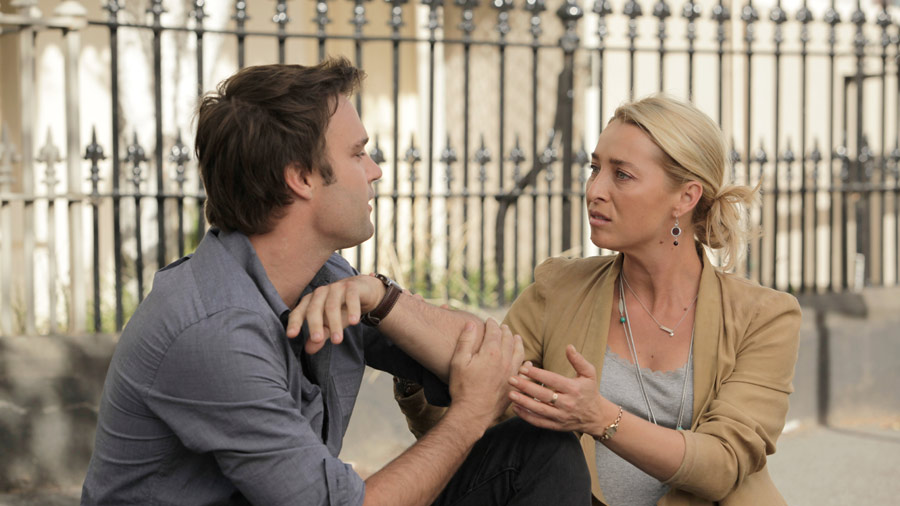
At the same time, the repetitive – but necessary – local content quotas debate reared its head again.
Everyone loves to argue that quotas are unfair. They place undue and unfair financial pressure on certain operators to do more than others – things that, they argue, they’d do anyway.
At this year’s Screen Forever conference it was, as always, the talk of the town, with the local television networks saying they’re doing more than ever, and they know their legal as well as their moral obligations to tell our stories.
Netflix, meanwhile, which was in the midst of increasing its local presence, was pleading “Give us time, we’re building a local team. You’ll see the results soon”.
Indeed, Netflix had commissioned a reimagining of Heartbreak High for a new generation. There’s the transformation of Trent Dalton’s Boy Swallows Universe into a Netflix offering, not to mention the ever-controversial “docu-soap” Byron Baes.
Speaking to me at Screen Forever, Netflix execs were keen for the message to be out there: They want to play local, and they want to play big.
Indeed, Minyoung Kim, vice president of content for Asia Pacific (excluding India), said the more local and the more authentic the story, the more likely it is the story will travel internationally.
Korea’s super hit, Squid Game, only proved this point. It went bananas internationally despite having local nuances, local languages and local commentary. This added to, not subtracted from, its global appeal.
Kim asked me: Why couldn’t an Australian story on Netflix have a similarly locally-created global mega smash?
And once they find one Australian story, why wouldn’t that global enthralled audience chase more of the same – the same way the now wide-eyed excited global Squid Game audience has done with Korean content?
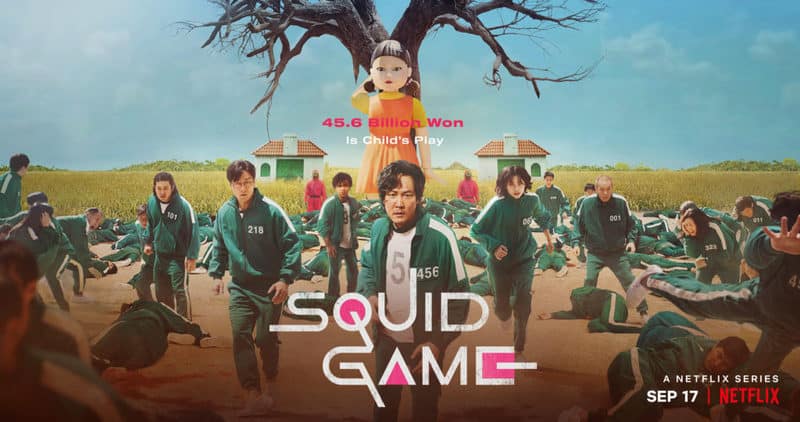
But these comments were made back in March. Since then, the economy has, well, not gotten better. Neither has Netflix’s position in the market nor the headlines coming out about its growth prospects.
Plus there are the pressures the climate is placing on communities, governments and economies. What about the pandemic? The Ukraine invasion? At this point, pick your issue.
Will the international players change their tune?
And what about our local friends?
Like the streaming services, the local TV networks are apparently all about local now.
Brook Hall, the director of content scheduling at the Seven Network, told me the network’s point of difference was speaking to middle Australia with sport, news and stories they wanted to see, both on a local and a wider national level.
He noted that the global streaming players, with their lack of regulation and their reliance on international stories and documentaries, almost forced the local players’ to lean in more to local stories.
“They are everything,” he said of local stories.
Adrian Swift, Nine Network’s head of content production and development, sang a similar tune.
“It’s all anyone wants,” he said, before he joked about trying to make an international drama work in this environment, in this economy. How times have changed.
Daniel Monaghan was perhaps in a more split position. He’s the senior VP of content and programming for 10’s parent company Paramount ANZ. Network 10 is, of course, a local television content producer, bringing us the likes of Neighbours (for the next week at least) and many others, but is now owned by one of the big international content houses.
He was keen to tell me about the many uniquely Australian stories that both 10 and Paramount tell, as well as pointing out that it’s a “slap in the face” when they’re asked to make even more local content.
These comments were, as I said, made back in March, and since then, 10 has had the largest local program launch in the metro markets with Hunted – both the largest of the year and the network’s own largest program launch since The Amazing Race in 2019.
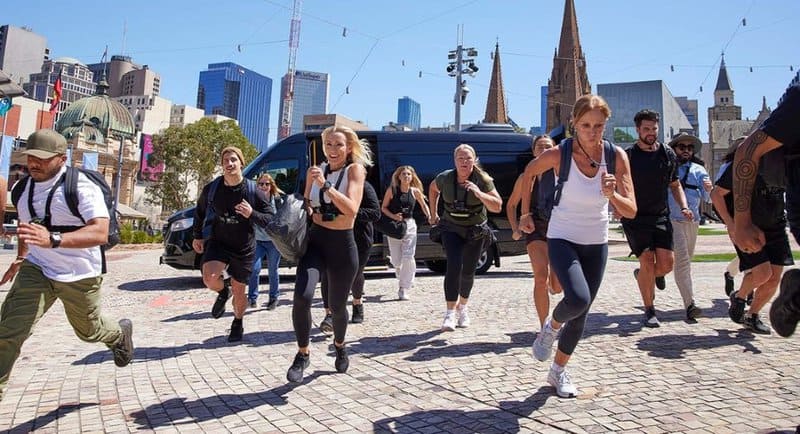
Hunted
And the other networks’ biggest hits are also local.
It seems simple, but the world is upside down and everything is made up and the points don’t matter (or do they?).
We exist in an economy where consumer confidence and spending are in the doldrums, while, at the same time, spending at retailers such as JB Hi-Fi has soared almost 11%.
So given the confusion, the confounding trends and the changing consumer confidence and ideals, what happens next, in this economy, will be a local story worth tuning into.
